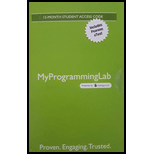
- The modification is in the comments being displayed for the correct answer and incorrect answer. If the answer is correct/incorrect any one of the four responses will be displayed based on random number generation from 1 to 4 using a switch case statement.
- Ask the student to enter the two numbers and validate his answer by creating a function multiply().
- Display the question repeatedly until the student gives the correct answer.
- Display the message every time to inform the student whether his/her answer is correct or incorrect.
- Call the function multiply() from the main and display the result.
The following are the modifications done-
Possible responses to the correct answer-
Very good;
Excellent;
Nice work;
Keep up the good work;
Possible responses to incorrect answer-
No, please try again
Wrong, try once more
Don’t give up
No, keep trying.
Summary Introduction- The program instructs and elementary school student to learn the multiplication.
Program Description- The purpose of the program is to give the instruction to an elementary school student such that he/she can learn the multiplication. The program uses the function multiply(int, int) which takes two integers and multiplies them, the student tells the answer, if the answer matches, it displays the answer is correct otherwise instructs the student to try again.
Want to see the full answer?
Check out a sample textbook solution
Chapter 5 Solutions
MYPROGRAMMINGLAB WITH PEARSON ETEXT
- Dijkstra's Algorithm (part 1). Consider the network shown below, and Dijkstra’s link-state algorithm. Here, we are interested in computing the least cost path from node E (note: the start node here is E) to all other nodes using Dijkstra's algorithm. Using the algorithm statement used in the textbook and its visual representation, complete the "Step 0" row in the table below showing the link state algorithm’s execution by matching the table entries (i), (ii), (iii), and (iv) with their values. Write down your final [correct] answer, as you‘ll need it for the next question.arrow_forward4. |z + 5 - 5i| = 7arrow_forward14. dz, C: |z❘ C: |z❘ = 0.6 ze² - 2iz Harrow_forward
 C++ Programming: From Problem Analysis to Program...Computer ScienceISBN:9781337102087Author:D. S. MalikPublisher:Cengage Learning
C++ Programming: From Problem Analysis to Program...Computer ScienceISBN:9781337102087Author:D. S. MalikPublisher:Cengage Learning C++ for Engineers and ScientistsComputer ScienceISBN:9781133187844Author:Bronson, Gary J.Publisher:Course Technology Ptr
C++ for Engineers and ScientistsComputer ScienceISBN:9781133187844Author:Bronson, Gary J.Publisher:Course Technology Ptr Microsoft Visual C#Computer ScienceISBN:9781337102100Author:Joyce, Farrell.Publisher:Cengage Learning,
Microsoft Visual C#Computer ScienceISBN:9781337102100Author:Joyce, Farrell.Publisher:Cengage Learning, EBK JAVA PROGRAMMINGComputer ScienceISBN:9781337671385Author:FARRELLPublisher:CENGAGE LEARNING - CONSIGNMENTProgramming Logic & Design ComprehensiveComputer ScienceISBN:9781337669405Author:FARRELLPublisher:Cengage
EBK JAVA PROGRAMMINGComputer ScienceISBN:9781337671385Author:FARRELLPublisher:CENGAGE LEARNING - CONSIGNMENTProgramming Logic & Design ComprehensiveComputer ScienceISBN:9781337669405Author:FARRELLPublisher:Cengage Systems ArchitectureComputer ScienceISBN:9781305080195Author:Stephen D. BurdPublisher:Cengage Learning
Systems ArchitectureComputer ScienceISBN:9781305080195Author:Stephen D. BurdPublisher:Cengage Learning





